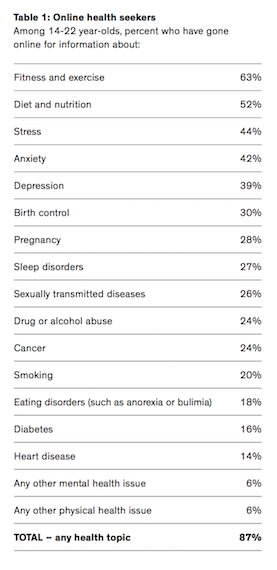Without a doubt, video is revolutionizing the pharmaceutical industry, giving companies the opportunity to train brand ambassadors in a variety of ways. In this article, you can find out how video marketing can help you achieve this and who the pioneers are.
No desire to read? Listen to our blogcast:
Let's ask ourselves a crucial question right from the start: Why is advertising necessary in the pharmaceutical industry at all?
The answer is obvious. There are now many different drugs and other medical products from different manufacturers on the market. Consumers are spoiled with choices. Of course, everyone in the pharmaceutical industry wants to boost the sale of their medicines. The overriding goal, however, is, and remains, the health of people and of society. This will put the advertising activities of pharmaceutical manufacturers in the right light again.
Pharmaceutical companies inform about remedies and methods, as well as their positive and negative effects on the human body. In addition to traditional advertising, pharmaceutical companies are increasingly producing comprehensive information brochures on diseases and developing high-quality training material for medical professionals to support them in their work.
If these companies do their job well, a unique selling point emerges, and the community of supporters grows. Gilead, for example, positions itself as an expert on HIV with its video.
Gilead on the mission to cure HIV.
The next step is to look at how the pharmaceutical world and video marketing actually fit together. We look at two of the hottest marketing trends at the moment.
Take a Closer Look at Two Marketing Trends.
How can you become more aware of the importance of a topic than to browse through the latest studies and figures? That's exactly what we intend to do.
Trend 1: The Digital Patient
Does the term "digital patient" or "online diagnoser" mean anything to you? No? We will enlighten you.
These are people who search online for answers to their medical questions. According to a study by the Pew Research Center in 2013, 59% of American Internet users do so. That's 6 out of 10 people. This makes medical and health research the third most popular search query on the web.
The table below shows what people are concerned about and research.

National Study Sponsored by Hopelab & Well Being Trust, Sommer 2018.
However, the online self-diagnosis is controversial. We should honestly ask ourselves whether we, as unskilled, trained physicians, can and want to rely on our own judgement?
No matter how you feel about it, the fact is that about half of all people first check out the Internet before going to see a doctor. Therefore, it is all the more important to provide relevant, up-to-date, and correct information online that does not report one-sidedly.
Trend 2: People Love Videos
The digital communication society in which we live today is fast, short-lived, and full of information. No wonder that people's attention span is drastically decreasing and that the phenomenon culminates in a fleeting reading behavior.
Why go through pages of product descriptions when there's an application video? Why read detailed website texts when a video points to the essentials? In short, consumers want to absorb as much information as possible in a short time and be entertained with a good story.
Video Production of Mynd: 5 Tips on How to Sell more with Video.
The trend towards moving images is clear. YouTube is the second largest search engine in the world. The platform processes 3 trillion search queries per month and every minute videos with a total length of 100 hours are uploaded. This makes YouTube a social media giant bigger than Bing, Yahoo!, Ask, and AOL combined.
Companies in all industries respond to the consumer behavior of the masses. According to a survey by Hubspot, 81% of advertisers already use video as a marketing measure in 2017. The advance of video does not stop at the healthcare sector either. The course for sustainable change is already being set today.
This raises the question: Do you want to be at the forefront of the pharmaceutical industry as a practitioner and use modern means of communication to your advantage? If so, you should pay full attention to the next section. There we will show you how you can benefit from video content by means of practical applications.
Let's get straight into the subject without further fuss.
Tip:
Marketing for the pharmaceutical industry is very special because certain laws and regulations prevail. There are guidelines regarding content and stylistic means of communication. If these are disregarded, high fines can follow. Therefore, you should always be up to date about what is allowed and what is not.
Exceptional Video Content with These Ideas.
#1 Build a Strong Brand and Community.
Your own health, as well as your loved ones, is the most important thing. This is a very sensitive issue where decisions have a direct impact on one's own life or that of others. In this case, decisions are not made lightly, but well-considered and consciously.
For this reason, different opinions and resources are often used in decision making. Brands can adapt to this and publish a whole range of different content formats (Branded Content).
Video types, such as explainer videos, image films, and product videos are ideal for giving the viewer a 360° view of your company. What products do you produce? What is your know-how? What do you stand for as a brand? What values do you represent? As a company, it is your job to create a digital personality that communicates transparently with which consumers can build an emotional relationship.
This ultimately sets you apart from the competition! Here's the proof: 59% of buyers stated that they buy products from brands they already know. 21% of consumers even buy a new product because it comes from a brand they already like.
Image film by Johnson & Johnson, explaining what the brand stands for.
Johnson & Johnson is doing a great job presenting themselves in a very versatile and informative way with different video categories on Facebook and YouTube. The themes cover health, family, and social responsibility. Their video material ranges from tips on raising children to educational campaigns (e.g. mental health), their cooperation with UNICEF, and much more. People feel they are in good hands, which is reflected in the size of their community of 800,000 subscribers on Facebook and 50,000 followers on YouTube.
#2 Push User-Generated Content.
At first glance, user-generated content User-Generated Content in the pharmaceutical sector seems somewhat paradoxical, but it is a big trend because UGC creates trust and identification with the brand on the part of consumers.
Popular content among Internet users are patient testimonials, real success stories of relevant treatment methods, or personal testimonials from patients who have had to completely turn their lives upside down due to an illness.
In fact, 92% of users rely more on personal recommendations from strangers and acquaintances than on the information and advertising messages of the brand itself. In addition, UGC videos uploaded to YouTube receive 10 times more views than branded video content.
Israeli breast cancer patients report the difference Roche's pink scarf makes for them.
Roche's example shows that it does not always have to be about the inedible "hard sell" of medicines. Brands can also communicate and connect with their customers at a deeper level. Roche did this in a very empathetic way by giving a pink scarf to Israeli breast cancer patients. This allowed the women to cover their naked bodies during the examinations. The positive effects this had on the patients were reported by the women themselves in the form of UGC.
#3 Understanding the Emotions of Those Affected.
Emotion sells! Most people are aware of this when they look at the most shared advertising campaigns of 2015. Here everything revolves around friendship, inspiration, and happiness. Further studies show that emotional videos receive 3 times more attention through word of mouth than those with hardly any or no emotion at all.
This is especially true for people who are ill or whose loved ones are suffering from a roller coaster ride of emotions. Fear, grief, anger, hope, joy, and gratitude can all be experienced at the same moment. Good communication differs in that it responds to the emotional situation of the person and offers solutions, such as taking away the fear of those affected.
Walgreens for example, refers to an event that was current at the time. The video shows how the employees of a Florida branch could be there for themselves and the community after Hurricane Irma. With combined strength, team spirit, and care, they quickly got back on their feet. Who doubts that Walgreens is not able to reliably care for the health needs of its customers? In all probability, nobody!
Walgreens reports on the situation during and after the Hurricane Experience in Florida 2017.
#4 360° Video, Virtual, and Augmented Reality.
Experts expect the global market for Virtual Reality (VR) and Augmented Reality (AR) to grow to $94.4 billion by 2023. The rapid spread of smartphones, growing networking via the Internet, and the further development of computer technologies are the main contributing factors for this growth.
The company BAYER, which uses a 3D view and AR to illustrate the effect of its drug, is providing initial approaches in this area. This simulation helps consumers understand exactly how things work. These tools are particularly useful for complex topics, such as medicine. Considering that 65% of people are visual learners, you can't help but say yes to VR and AR.
360° videos are already increasingly being used, but VR and AR are still in their infancy. Here you still have a lot of design freedom and potential upwards!
BAYER’s innovatives Verkaufs-Tool zeigt die Wirkung ihres Medikaments.
#5 Winning Over Medical Practitioners.
Perhaps you can already guess why it is important to attract healthcare professionals. In the end, they are the ones who prescribe drugs, suggest treatment methods, and incorporate certain products into their therapies. They act as gatekeepers in the decision-making and purchasing processes of end consumers.
They also spend an average of 180 minutes a week on medical videos related to their profession. There are good reasons for this! Instead of spending hours going through scientific studies, videos illustrate the advantages of certain medicines and new therapy beginnings in a fast, simple, and lively way.
Therefore, the logical conclusion is to support medical professionals in their work so that they can exercise their profession even better.
This works best with the following content strategies:
- Highlight the added value of new products and treatments (see product videos),
- promote dialogue on neglected issues, and
- create space for cooperation.
The Royal Pharmaceutical Society takes up the last two points in its video, offering a platform where physicians can exchange information.
The Royal Pharmaceutical Society is for a stronger integration of pharmacists in the care of patients.
Would you like to promote eLearning within your company? Then we recommend our article, in which you learn how you can revolutionize eLearning with video.
#6 Using Thought Leadership for Yourself.
Attention: Influencer marketing and thought leadership are not the same! While the main medium for influencers is social media, key opinion leaders (KOL) gain credibility through their academic qualifications, relevant practical experience, and scientific achievements.
KOL's in the medical world are opinion leaders renowned for their exceptional expertise in a particular field. They are invited to panel discussions, are guest authors and guest lecturers at universities, conduct clinical trials, and are advisors to major pharmaceutical companies and medical institutions, among others.
Their opinion has weight when it comes to giving more credibility to cures, the effects of drugs, etc. With their help, you can bundle users' video content in one place and provide them with comprehensive information without having to worry about customer confidence.
The “World Congress of Dermatology” sets an example by interviewing participating experts on a specific topic. Viewers can clearly see the expert status of the respondents by displaying their name and title at the bottom of the screen.
Leading dermatologists during WCD 2015 on the importance of continuous patient education.
Will 2019 be the year for your video marketing breakthrough?
According to pharmaceutical marketing agency BlueNovius, brands can increase their recognition value by up to 139% when they add video to their marketing activities. It gets even better! According to research, pharmaceutical companies increase their conversion rate by a whopping 86% when they include a video on their landing page.
I guess there is nothing more to say except: When will you start planning and implementing your video content?
Do you still have unanswered questions or would you like specific support for your video project? We will be happy to advise you free of charge and without obligation »




